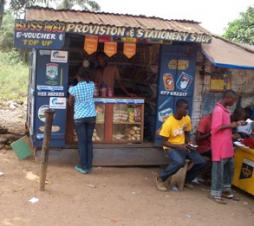Microfinance
Posted by kelechiea on Jul 12, 2011
Branchless Banking 2010: Who Is Served? At What Price? What Is Next? data sheet 1600 Views
Author:
Claudia McKay, Mark Pickens
Abstract:
Excitement around branchless banking is rapidly turning into action by the private sector. Of the 79 live mobile money deployments tracked by the GSM Association (GSMA), two-thirds have launched in 2009 and 2010. Nokia and Paypal are investing in mobile payment platforms available to any client regardless of his or her mobile network or bank, a development that could shake up markets. And early branchless banking leaders are launching out in new directions. Brazilian banks are increasingly eager to use agents equipped with point-of-sale (POS) devices to originate loans. In Kenya, Safaricom has teamed up with Equity Bank, the country’s largest bank, to offer M-Kesho, a service that uses M-PESA’s mobile payments platform to offer a full range of Equity’s bank products.
Will these sizeable investments pay off? Many in the private sector believe reaching large numbers of mass market clients is a precondition to large-scale profits, but at the same time, they are uncertain about how quickly branchless banking will gain traction with the unbanked, low-income clients who make up the mass market. In other words, the prospects of branchless banking are still unclear.
Posted by KatrinVerclas on Nov 01, 2010
Is mobile money living up to the hype? Does it provide more and better financial services for low-income and poor people? Our great friends over at CGAP, the definitive source on credible research on mobile money and branchless banking, have gathered data on 16,000 mobile money customers in seven coutries to understand better how far branchless banking is reaching the unbanked. The results are published in a new CGAP paper.
As fas as we know, this is the first time such an extensive data set has been collected. It sought to answer three questions: Is mobile banking reaching poor customers? Is it more affordable than traditional banking? And lastly, do customers get what they want?
The CGAP researchers looked at 18 branchless banking providers with more than 50 million customers in 10 countries. What did they find?
Posted by Bonnie Bogle on Oct 13, 2006
In very exciting news, microcredit pioneer Muhammad Yunas and the Grameen Bank he founded have won this year’s Nobel Peace Prize for their work bringing people out of poverty in Bangladesh. This is a great win for everyone who believes that the path to peace is through ending poverty and that technology can help achieve this.
Yunas came up with the concept of microfinance, which has made it possible for millions of Bangladeshis to rise out of poverty. He has also made great strides in bringing technology to poor areas in Bangladesh, particularly cell phones.
The Grameen Phone initiative uses cell phones for economic development. How it works is that banks give loans so people can purchase mobile phones and in turn rent them out to others in their villages. These phones are often the first access entire villages have to a telephone. Not only do these phones make excellent businesses for the people who manage them, but they also make it possible for everyone in the town to work more efficiently through faster communications. A case study about this program is available here. I’ve also written about it here.
And not surprisingly, access to mobile technology is bringing about the development of innovative new tools to meet Bangladeshi’s specific needs. One example is the service Cell Bazaar, a kind of mobile Craig’s List that people can use to check prices before they buy or sell a product to make sure they are getting the best rate.
Congratulations Yunas and Grameen Bank. Your win is a great achievement for the movement behind using technology for social change, the field of microfinance, and everyone in Bangladesh.

